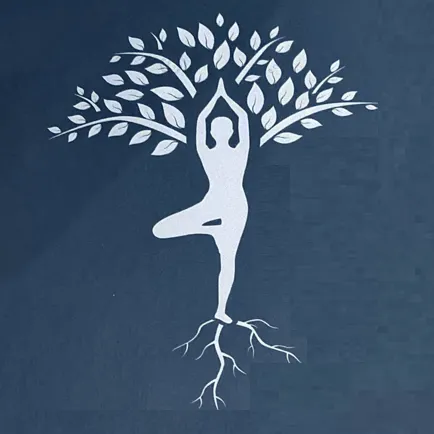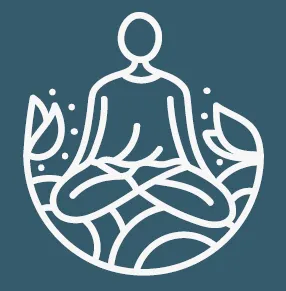Blogs
Written by Elke Hottentot

Yoga Sutras: how to integrate them in your daily life and in your yoga class?
Yoga Sutras: how to integrate them in your daily life and in your yoga class?
The question to discuss those aspects of Patañjali’s Yoga Sutras that carry meaning to me seems like an overwhelmingly large one. Almost all of the sutras that I have studied to date carry meaning for me; each one is like a road sign that shows the way; even if I am not yet able to read all of them. Nevertheless, I am inspired by the wisdom Patañjali conveys in the Yoga Sutras. Even though each and every one is clear to me at this point in time, I trust that – with ongoing study – time will tell whatever it is from this rich text that I need to know.
For the purpose of this question, I will highlight elements from chapter I, Samadhi Pāda, and chapter II, Sādhana Pāda of the Yoga Sutras, particularly those of the vritti[1], kléshas[2], and antarayah[3] and describe their meaning in my life as a budding yogi and yoga teacher.
Vritti
Patañjali defines yoga as yoga citta vritta nirodhah in sutra I – 2[4]. At the beginning of this mémoire, this was translated as the end of the automatic activity of the mind. Said otherwise; ‘as the mind, so the man; bondage or liberation is in ones own mind’[5]. The notion of ‘the end’ is enormous. It means that we master our mental state to such a degree that we are no longer overtaken by the incessant current of our thoughts, our emotions; that we are conscious of our true nature as something that is always and always there and ever lasting. If this sutra is truly grasped and practiced, it is said that one would not need to read the rest of the 194 sutras that remain in Patañjali’s work.
A very important word in this sutra is that of vritti, which literally translates as ‘modifications, here referring to modifications of the mind stuff, ‘citta vritti. According to Patañjali, our mind knows five different types of mental modifications, or vritti. These can be described as ‘waves’ inside the psyche. They are five-fold[6], namely: pramāna (right knowledge through direct observation/intuition, deduction and the study of scriptural testimony), viparyaya (misconception or wrong knowledge, such as in the example of “seeing a coiled rope and mistaking it for a snake”[7]), vikalpa (imagination in the sense of imagining the creation of something that does not yet exist), nidrā (deep sleep or sleep with dreams, also referred to as a meditative state of sleep), and smriti (our memory which is comprised of both our conscious and unconscious memories). Vrittis can be painful or not and are present in each and every human being. If we learn to control the fluctuations in those modifications, we will have achieved the state of yoga. Simply said, we would no longer experience suffering and we would be at peace.But, it is possible to achieve a state wherein both the vritti no longer cause suffering in our lives. How? This is explained by Patañjali in the second chapter of the Yoga Sutras, which is dedicated to describing the tools at our disposition to reach the state of yoga.
Far from giving a complete answer to the above question, I believe it important to briefly refer to sutra II – 1, which describes Kriya – Yoga, or “Yoga in practice.[8] ” Kriya – Yoga should adhere to three inseparable aspects, namely tapas, “accepting pain as purification”, svadyaya, “study of spiritual books” to invite reflections based on our lived experiences, propose a way forward and, as such, to give our life a more profound meaning, and Isvara pranidhanam, “surrendering”[9] It is always interesting to look for other interpretations as each sheds light on the inherent meaning in a slightly different manner. Michel Albin for example, interprets tapas as “sustained effort”, svadyaya as “conscience of inner nature”, and Isvara pranidhanam as “surrendering to the Divine.” [10]
As mentioned earlier, yoga is both a practice and an end goal in itself. In our practice, we aim for an end to the fluctuations in the modifications of the mind stuff and as such, any suffering experienced points to the work that remains to be done. For one who has achieved the state of yoga, there would no longer be any of the kinds of modifications that cause suffering. The mind would still know it modified states, but no longer would they cause any suffering; the mind would be tranquil, peaceful and content.
Meaning of vrittis in my personal life
Having given an introduction to sutra I - 2 above and to the vrittis, I will now hone in one particular vritti that appears particularly relevant in my life today, namely that of viparyaya (sutra I – 8). According to Sri Swami Satchidananda, it stands for “misconception.” [11]
This vritti carries great meaning in the relationship with my partner. We met over five years ago, and even though I saw ample red flags from the very beginning, I just wanted to be attached. I feared being a child-less middle aged woman, and quickly convinced myself that we were compatible, worthy of being spliced together. “It truly is extraordinary how you can talk yourself into situations which you know aren’t durable. But neediness can make just about anything seem right.”[12] So, I continued being in the relationship; moved in and together, decided to try for a child.
During 2010, I worked on a regular basis with a shaman, to whom I am grateful for shedding light on the role of misconceptions in my life; for bringing them out of obscurity and rendering them visible in the light of consciousness. Thanks to this work, I have become aware that, as a result of my past experiences and those of my family members, I have operated under unconscious false assumptions about myself and what life ought to look like. To give only one example, women in my family have suffered tremendously at the hands of men, whether because of incest, threat of murder or their children being taken away from them. Unconsciously, I was operating with the conviction that life is suffering and that by perpetuating this suffering, I could somehow lighten the burden carried by my female family members. This conviction in turn led me to choose life situations that indeed continued this suffering.
Also thanks to the work with the shaman; I became increasingly aware of the close link that exists between viparyaya and samskaras, or “impressions” (sutra I – 50)[13]. Particularly those samskaras that are unconscious and are influencing me beyond knowing are a recent source of intrigue; one of them being the result of sexually inappropriate behaviour on the part of my family members. Although well-engrained in my memory, I came to see how this also left its imprints in my unconscious mind. The imprints, over time, caused me to unconsciously consider it unsafe to be a woman, and as such, led me to suppress my feminine side. Unaware, these samskaras rendered me ignorant – and I say this in the gentlest sense of the word – and led me to live with unconscious misconceptions that cause me to organize my life in a way that does not contribute to my sense of peace and fulfilment. Simply put, defences that may have had their purpose in my life and those of the women before me in the past, are now no longer necessary. Viparyaya caused by samskaras have thus become a recent source of intrigue to me.
Over the past two years, I have become much more conscious of these formerly unconscious imprints and subsequent misconceptions thanks to being in relationship with Damien, my partner and the work with the shaman. As such, I find myself in the middle of – what I can only call - a consciousness raising process. Light is being shed on the situation in which I find myself and on the ways in which I have, unconsciously attracted it.
Meaning of kléshas in my life
Patañjali refers to the kléshas in YS II 2 – 9, which are translated as “afflictions, suffering, torment, difficulty.”[14] They are considered sources of suffering and count five in total, namely; ignorance or confusion about reality (avidyā), ego-centrism or self importance that expresses itself by making everything about ‘me’ (asmita), our preferences – likes and dislikes (rāga), aversions (dvésha), and fear (abhinivésha).
As mentioned earlier, for me, the practice of yoga facilitates ‘the bringing of my character to the level of my soul.’ Interpreted humbly, this means the absence of all kléshas. The desire to be free of these afflictions begs the question: ‘Which kléshas are most active in my life?’
In order to answer this question, I turn back to the experiences I shared in my reflections on specific vrittis that have a particular meaning in my life. This reflection ended with a reference to the consciousness raising process I now find myself engaged in as a result of becoming conscious of certain samskaras and resulting viparyaya. And, as grateful I am for being in this process, it is not without its pitfalls; pitfalls that can be ascribed to the presence of kléshas.
As, whilst I am gaining increasing clarity about past experiences and the impact these continue to have on my life, the klesha abhinivésha is being activated; fear of once again making a decision - the first one being the decision to enter into a relationship with Damien, the second one my eventual decision to leave - that is not in keeping with my true nature; my nature beyond unconscious patterns that causes me to say and do things that are not in sync with my true nature, nor in line with my rational mind.
This fear is intimately linked to my being afraid of making a decision that I come to regret later, just as I am now. I am tormented by doubt, and this doubt has everything to do with not being sure if I can trust my own judgment. In fact, I am afraid that I can’t trust it. If this were to be so, I worry that taking the decision to leave may in fact be the wrong one and that I will – for the rest of my life - be hunted with a sense of regret and guilt – towards our son.
In order to live my life without the interference of the kléshas, I need to know who I really am, behind all the masks, the veils, the curtains, the assumptions of living life for such a long time that was ignorant of even the existence of my inner most nature. And, as this relationship has been such a teacher of this inner most nature and all that stands in its way, I stay and try to learn as much as I can about myself; to become utterly clear about all those unconscious processes that have made me choose this relationship. As it is, after all, this relationship with Damien, that has proven to be my biggest teacher. As long as I am learning, I see reason to stay.
Obstacles that disperse my mind in my day-to-day life
There are many more aspects of Yoga that Patañjali exposes in the Yoga Sutras that carry meaning in my life. One of these is the nine obstacles that disperse one’s consciousness and which are described in chapter I, sutra 30. To explore which of these obstacles presents the greatest hurdles in my life, I discussed them with a fellow -student. This revealed that pramada[e1] , “carelessness “and samsaya, “doubt’[15] are the two obstacles that currently stand most in the way of me achieving the state of yoga.
Reflecting on pramada[e2] led me to look up the translation of this word into French. Interestingly, Michel Albin does not translate this as “carelessness”, but as “a lack of mental balance” [16], whilst Anoula Sifonios translated it during one of our lectures in 2009 on the YS as haste, as not taking the necessary time for things It is fascinating to see how the simple act of translation – and unavoidably – interpretation can change the meaning of this obstacle.
Whereas I would not have found myself ‘guilty’ of carelessness, I do have to admit that am guilty of ‘haste’. Closer contemplation revealed that, yes, when one is in haste, one tends to be careless. So ode to the world’s many languages, translation of which can sometimes deepen understanding of a single word, and with that, the world; in this instance, my inner world and the way this facilitates my interaction with the outer world.
Considering the notion of ‘haste’, I am indeed often hurried, up against a time line, trying to do more than one thing at a time and fully aware of each and every passing minute and the tasks that still lay ahead of me. The stress this causes does not slow me down; on the contrary, it makes me move even faster while paying even less attention, and so yes, becoming even more careless as a result. Thinking of me as hurried is somehow less confronting than thinking of myself as careless. The mere act of contemplating this today seems to already have shifted something in this vicious cycle, as if the simple mentioning of the word ‘careless’ was necessary for me to see this obstacle for what it is: a lack of care on my part for that what I am doing, for that what is around me. This is a point in case of the importance of studying spiritual books along side the practice of asanas, meditation, prānāyāma and surrendering to the divine with faith and confidence.
Having explored one important obstacle in my life, let me know address a second important one. As mentioned earlier in the section on vritti, doubt plays an ever-pervasive role in my life. During the first fifteen years of my life, doubt permeated much of my day-to-day existence due to – what seemed to be – a lack of self – confidence. My remedy at the time consisted of asking my teachers one question after the other as a way of reassuring myself that I had fully understood the lesson. Having been so plagued by doubt during the first part of my life, the twenty years that followed, were marked by a remarkable absence of such. I took big decisions without endless contemplation and without a hint of doubt or fear. The decision to pick up and move from the Netherlands to the United Kingdom was, for example, made in less than 48 hours. The same was true for the decision to move to Canada and then to Hong Kong. I did not fear making a mistake. This, unfortunately, was not the case during the past five years of my life. The amount of doubt I experienced surrounding my relationship was torturous. ‘Should I stay or should I go?’ I simply did not know. It was as if I was no longer in touch with myself, as if I could no longer sense what was right and stuck in endless mental dialogues between me and myself.
Thankfully, I feel like the light is no longer moving at the end of the tunnel, meaning, doubt is playing a smaller and smaller role in my life. Why this is so, I do not know. Perhaps it is thanks to the practice of yoga? I feel more confident and, most importantly, have faith that I am moving along the path of my life in the right direction: one obstacle down, some others yet to be tackled.
Giving meaning to Patañjali as a yoga teacher in the year 2012
‘How can I bring the Yoga Sutras alive in a yoga class? The truth is that my passion for yoga is in no small part thanks to the Yoga Sutras. The impact this text has had on my life cannot be described in words. It therefore is paramount for me to bring this text - which dates back nearly 2000 years - alive when teaching postures, breath practices and meditation?’
For the sake of brevity, I will discuss two sutras here, namely YS I – 2 and I - 33. Let me begin with YS I – 2, which translated reads as: “The restraint of the modifications of the mind-stuff is Yoga.”[17] Anyone practicing yoga may have already experienced this from time to time at the end of a good asana practice or prānāyāma experience. Worries, fears and expectations no longer seem to plague our mind and our mind experiences a remarkable state of liberation, of space. We feel rooted in the here and now, grasp a sense of oneness and our sense of intuition is strong. The amazing thing is that I did not have to force this state of being; there was no effort on my part. All I had to do was practice yoga, and the rest fell into place! By putting words on an experience my students may have already had, I aim to assist them in recognizing that they have already been able to attain this state, and by doing so, perhaps strengthen their resolve to practice yoga with dedication.
For those students that have yet to experience this freedom of mind[e3] , I try to pass the profound meaning of this sutra by inviting them to become aware of all the mental movement; of the thoughts that pass; to greet each one of them kindly, and then to let them go. I encourage them to detach, which I translate as not attaching one thought to another. To do this, I tell them to put all their attention on their breath and to follow it very closely. And, if at one point they catch themselves being carried away by a thought, to bring their attention back to their breath. From experience, I tell them that the more this is practiced, the quicker they will become aware of the fact that they have once again become attached to a thought, and the more quickly they will be able to let it go.
YS 1 – 33 is a beautiful support to maintain the liberated state of mind YS I – 2. It reads as followed: “By cultivating attitudes of friendliness towards the happy, compassion for the unhappy, delight in the virtuous, and disregard toward the wicked, the mind-stuff is undisturbed calmness.”[18] By sharing this sutra with my students and by explaining how we can continue the practice of yoga off the mat in our daily lives in our relations which others, and how this helps us to attain. YS 1 – 33.
[1] Satchidananda, Swami (2009): Integral Yoga Publications, Yogaville, The Yoga Sutras of Patanjali, p. 3.
[2] Idem, p. 83.
[3] Idem, p. 50
[4] Blitz, G. (1991): Albin Michel, Paris, Yoga. Sutras Patanjali, p. 20.
[5] Satchidananda, Swami (2009): Integral Yoga Publications, Yogaville, The Yoga Sutras of Patanjali, p.5.
[6] Idem, YS I 7 -11, p. 12 – 18.
[7] Idem, p. 16.
[8] Idem, p. 79.
[9] Satchidananda, Swami (2009): Integral Yoga Publications, Yogaville, The Yoga Sutras of Patanjali, p. 79.
[10] Freely translated from: Blitz, G. (1991): Albin Michel, Paris, Yoga. Sutras Patanjali, p. 67.
[11] Satchidananda, Swami (2009): Integral Yoga Publications, Yogaville, The Yoga Sutras of Patanjali, p. 16.
[12] Kennedy, D. (2001). Arrow Books, London, The pursuit of happiness, p. 47.
[13] Idem, p. 75.
[14] Freely translated from Blitz, G. (1991): Albin Michel, Paris, Yoga. Sutras Patanjali, p. 68.
[15] Satchidananda, Swami (2009): Integral Yoga Publications, Yogaville, The Yoga Sutras of Patanjali, p. 50.
[16] Freely translated from: Blitz, G. (1991): Albin Michel, Paris, Yoga. Sutras Patanjali, p. 44.
[17] Satchidananda, Swami (2009): Integral Yoga Publications, Yogaville, The Yoga Sutras of Patanjali, p. 3.
[18] Idem, p. 54.






